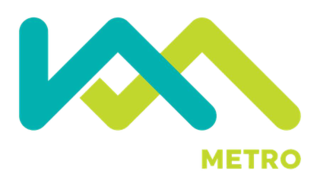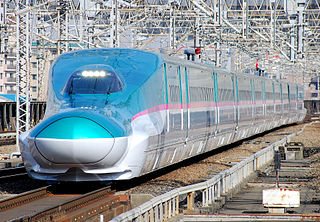
The Mumbai Metro is a rapid transit (MRT) system serving the city of Mumbai and the wider Mumbai Metropolitan Region in Maharashtra, India.

Navi Mumbai is a planned city next to Mumbai (Bombay), located in the Konkan division of the western Indian state of Maharashtra, on the mainland of India. Navi Mumbai is situated across two districts, Thane (Taana) & Raigad. It is a part of the Mumbai Metropolitan Area.
Navi Mumbai International Airport, officially named as D. B. Patil International Airport, is an international airport being constructed in Ulwe, Navi Mumbai, Raigad district, Maharashtra, India. When completed, it will become the second airport of the Mumbai Metropolitan Region, serving alongside Mumbai's existing Chhatrapati Shivaji Maharaj International Airport.

The Kochi Metro is a rapid transit system serving the city of Kochi and the wider Kochi Metropolitan Region in Kerala, India. It was opened to the public within four years of starting construction, making it one of the fastest completed metro projects in India. The Kochi metro project is the first metro system in the country which connects rail, road and water transport facilities. It is also the first metro rail system in India to be operated using the Communication-Based Train Control (CBTC) signalling system, which requires minimum human intervention. The Kochi Water Metro is integrated with the Kochi Metro, which also serves as a feeder service to the suburbs along the rivers where transport accessibility is limited.

Pune Metro is a mass rapid transit system serving the city of Pune, India. The system comprises 3 lines with a combined length of 54.14 km (33.64 mi), of which 24.12 km (14.99 mi) on two lines are operational as of August 2023. The extended metro line from Ruby Hall Clinic to Ramwadi, including the Bund Garden, Kalyani Nagar and Ramwadi metro stations, covering a distance of 6 km, was inaugrated on 6 March 2024. The 16.59 km (10.31 mi) Purple Line from PCMC Bhavan to Swargate runs on an elevated viaduct between PCMC Bhavan to Range Hills, from where it goes underground. The Aqua Line runs from Vanaz to Ramwadi covering a distance of 14.66 km (9.11 mi) on an elevated viaduct. The 23.33 km (14.50 mi) elevated Line 3 will run from the Rajiv Gandhi Infotech Park in Hinjawadi via Balewadi to Civil Court. All three lines will align at the Civil Court interchange station.

Bengaluru Suburban Railway is an under-construction suburban rail network for the city of Bangalore. A suburban rail system for the city was first proposed in 1983. Since then, several different route proposals were made but no suburban rail project took shape. It was finally approved in the 2019 Railway Budget.

The Lucknow Metro is a mass rapid transit (MRT) system in Lucknow, Uttar Pradesh, India. The metro is owned and operated by the Uttar Pradesh Metro Rail Corporation (UPMRC). The frequency of the metro's services is around 5 - 7 minutes.

Ahmedabad Metro is a rapid transit system for the cities of Ahmedabad and Gandhinagar in Gujarat state of India.

The Mumbai Trans Harbour Link, officially named as Atal Bihari Vajpayee Sewri–Nhava Sheva Atal Setu and colloquially known as Atal Setu, is a 21.8 km (13.5 mi) 6-lane elevated highway bridge, which connects Mumbai with Navi Mumbai, its satellite city. It is the longest sea bridge in India, and the world's 12th longest sea bridge. The bridge begins in Sewri, South Mumbai, crosses Thane Creek north of Elephanta Island, and terminates at Chirle near Nhava Sheva in Uran taluka, Navi Mumbai. The road is linked to the Mumbai–Pune Expressway in the east and to the Coastal Road in the west. The 6-lane highway is 27 meters in width, in addition to two emergency exit lanes, two edge strips, parallel crash barriers and noise barriers on both sides. The project costs a total of ₹17,843 crore (US$2.2 billion). The bridge has a capacity to handle 70,000 vehicles per day. Construction on the bridge began in April 2018, and was inaugurated by Prime Minister Narendra Modi on 12 January 2024.

Urban rail transit in India plays an important role in intracity transportation in the major cities which are highly populated. It consists of rapid transit, suburban rail, monorail, and tram systems.

Mumbai–Ahmedabad High Speed Rail Corridor (MAHSR) or Mumbai–Ahmedabad HSR is an under-construction high-speed rail line, which will connect Mumbai, the financial hub of India, with Ahmedabad, the largest city in the state of Gujarat. When completed, it will be India's first high-speed rail line.

Nagpur Metro is a rapid transit system for the city of Nagpur, Maharashtra, India. Phase I of the metro project cost was estimated to cost ₹8,650 crore but the final project cost incurred was ₹9,279 crore (US$1.2 billion). In February 2014, the Government of Maharashtra gave approval for the Metro project, while the Government of India's Ministry of Urban Development had given "In Principle" approval for the project. On 20 August 2014, Union Cabinet gave approval for the development of the project, and the Prime Minister laid the foundation stone on 21 August. Construction began on 31 May 2015, with trial run beginning on 30 September 2017.

Line 2 (Yellow Line) of the Mumbai Metro is a rapid transit metro line in the city of Mumbai, Maharashtra, India. The line connects Dahisar in the northwest with Mandale in Mankhurd via Andheri, BKC and Chembur in the east. Phase One of Line 2A was partially opened on 2 April 2022 from Dahisar East to Dahanukarwadi.

Swachh Bharat Mission (SBM), Swachh Bharat Abhiyan, or Clean India Mission is a country-wide campaign initiated by the Government of India on 2 October 2014 to eliminate open defecation and improve solid waste management and to create Open Defecation Free (ODF) villages. The program also aims to increase awareness of menstrual health management. It is a restructured version of the Nirmal Bharat Abhiyan which was launched by Congress in 2009 that failed to achieve its intended targets due to rampant corruption and indecisive leadership.

Digital India is a campaign launched by the Government of India to make its services available to citizens electronically via improved online infrastructure and by increasing Internet connectivity. The initiative includes plans to connect rural areas with high-speed internet networks. It consists of three core components: the development of secure and stable digital infrastructure, delivering government services digitally, and universal digital literacy.

Make in India is an initiative by the Government of India to create and encourage companies to develop, manufacture and assemble products made in India and incentivize dedicated investments into manufacturing. The policy approach was to create a conducive environment for investments, develop a modern and efficient infrastructure, and open up new sectors for foreign capital. The initiative targeted 25 economic sectors for job creation and skill enhancement, and aimed "to transform India into a global design and manufacturing export hub."
The Indian Government is undertaking several initiatives to upgrade its aging railway infrastructure and enhance its quality of service. The Railway Ministry has announced plans to invest ₹5,400,000 crore to upgrade the railways by 2030. Upgrades include 100% electrification of railways, upgrading existing lines with more facilities and higher speeds, expansion of new lines, upgrading railway stations, introducing and eventually developing a large high-speed train network interconnecting major cities in different parts of India and development of various dedicated freight corridors to cut down cargo costs within the country.
Manohar International Airport, is an international airport at Mopa in Pernem Taluka, North Goa district in the state of Goa, India. It serves North Goa and the adjoining districts of Karnataka and Maharashtra, and as a second airport of Goa after Dabolim Airport in Dabolim. On an average, the airport handles around 100 aircraft movements and about 15,000 passengers daily. It is the fifteenth busiest airport in India. The airport is developed by GMR Goa International Airport Limited (GGIAL), a special purpose vehicle (SPV). It is built at a cost of ₹3,000 crore. The airport is built under the Build Operate Transfer (BOT) model in four phases, with the first phase costing a total of ₹1,500 crore. In financial year 2023-24, the airport handled over 4.4 million passengers, which is close to its current maximum capacity of 4.5 million passengers per year. It is named after the former Minister of Defence and the former Chief Minister of Goa, Manohar Parrikar.

The premiership of Narendra Modi began on 26 May 2014 with his swearing-in as the Prime Minister of India at the Rashtrapati Bhavan. He became the 14th Prime Minister of India, succeeding Manmohan Singh of the Indian National Congress. Modi's first cabinet consisted of 45 ministers, 25 fewer than the previous United Progressive Alliance government. 21 ministers were added to the council of ministers on 9 November 2014.

















